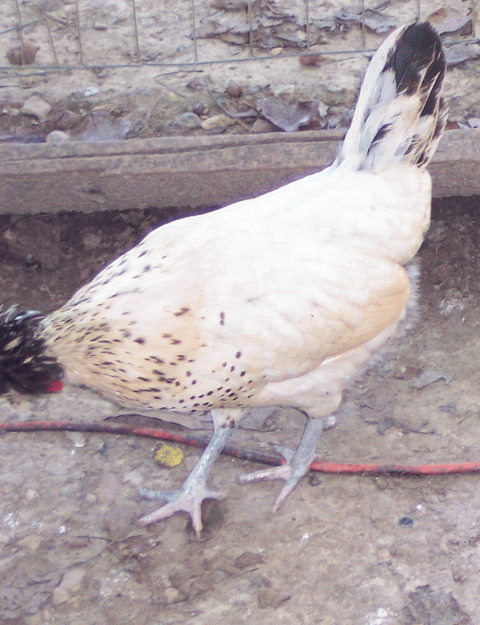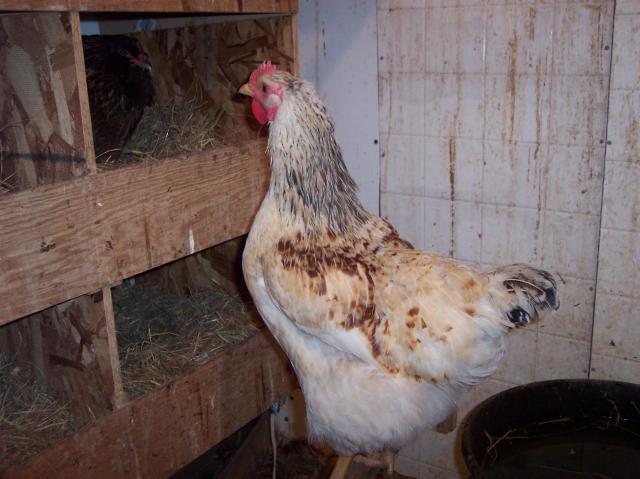- Aug 22, 2010
- 742
- 22
- 156
Shamoman, there are golden wheatens, and silver wheatens. They can all be bred together. I understand there were originally stippled hens, but the males are the same.
Follow along with the video below to see how to install our site as a web app on your home screen.
Note: This feature may not be available in some browsers.
A wheaten hen that carries dominant white looks like that...
Genetics 101Hi: I'm new! I think I saw a picture of a male bird that was similar to a golden duckwing, but had deep red across the back. I had a male like this one time and was looking for that gene. It is different than golden because I have had BB red males that had very dark backs, but when the silver gene appears in this strain it appears to bleach out the deep red to a lighter color as in golden. I think I saw the picture on this forum,but not sure. Can anyone help me?
Buffchickenbuff


Genetics 101Thank you for the pictures and explanation. They helped. Since seeing the picture I mentioned I have seen other photos of Gold Cubalaya. They all had the deep red. I am not sure what the cinnamon color is. Fred Jeffery, in his book on bantams, and speaking of creating Red Pyle, refers to a "pumpkin" color on hens, could this be the cinnamon color?